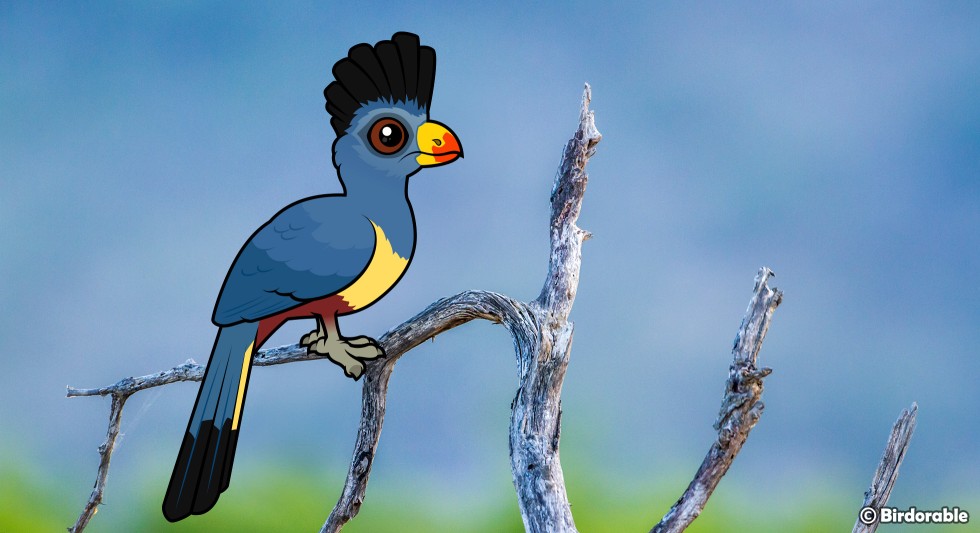Meet the Birdorable Great Blue Turaco: Vivid Colors and Striking Features

The Great Blue Turaco is a real showstopper. As the largest bird in the turaco family, it’s hard to miss with its vivid colors and impressive size. One of the most striking features of the Great Blue Turaco is its head crest. Thick and dark, the crest stands out prominently, making this bird look even more majestic. But that's not all. The Great Blue Turaco's bill is another standout feature, a striking combination of red and yellow, adding a splash of color to its already beautiful appearance.
This bird is native to central Africa and can be found in countries like Cameroon, Uganda, and the Democratic Republic of Congo. Unlike some of its relatives, the Great Blue Turaco is not currently threatened, which is great news for bird lovers. It thrives in a variety of habitats, including tropical forests, savannas, and even human-altered landscapes like gardens and plantations.
The diet of the Great Blue Turaco is quite diverse. These birds love to feast on fruit, but they don't stop there. They also eat leaves and flowers, making them important players in their ecosystem. By consuming and dispersing seeds, they help maintain the health and diversity of their habitats.
While the Great Blue Turaco is relatively safe in the wild, it does face some threats. In some areas, they are hunted for their meat and feathers. Their feathers are particularly prized for their beauty and are often used in traditional ceremonies and decorations.
Despite their popularity among bird watchers and enthusiasts, Great Blue Turacos are rarely found in captivity. However, there are a few exceptions. The San Diego Zoo, which boasts the largest collection of bird species in the United States, has a Great Blue Turaco in their collection. This gives visitors a rare opportunity to see this magnificent bird up close. Similarly, the zoo in Antwerp has a pair of these beautiful birds, offering another chance for people to admire them.
For those who can't make it to these zoos, here's a short video from the San Diego Zoo showcasing their Great Blue Turacos:
Like all of our cute Birdorable birds, our Great Blue Turaco illustration is available on a wide variety of apparel options and novelty gift items. Pictured here are two t-shirt styles; visit the Great Blue Turaco product page in our shop for more gift ideas.








Comments
Leave a comment
Thank you!